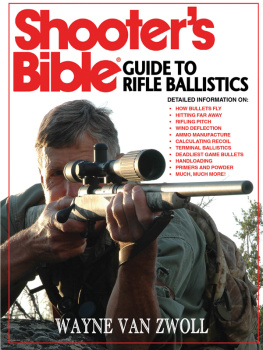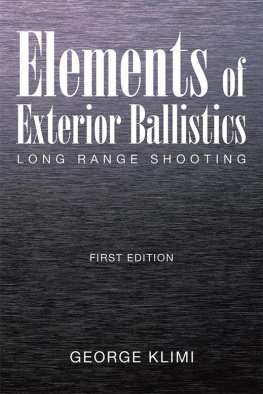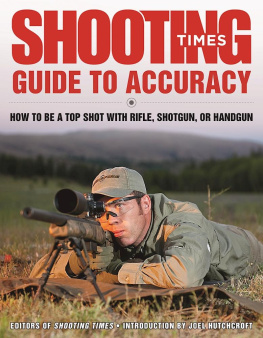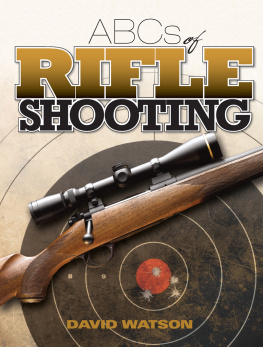Thank you for purchasing this Gun Digest eBook.
Sign up for our newsletter and receive special offers, access to free content, and information on the latest new releases and must-have firearms resources! Plus, receive a coupon code to use on your first purchase from GunDigestStore.com for signing up.
or visit us online to sign up at
http://gundigest.com/ebook-promo

TABLE OF CONTENTS
INTRODUCTION
CLOSE NO MORE
Beginning with the Norman invasion, in 1066, the bow and arrow shouldered its way into the culture of the British Isles. With it, kings defended the realm and extended its boundaries, routed much larger forces and, by threat of the grey goose wing alone, kept aggressors at bay. Royal edicts required able men to become proficient with the longbow. Edward IV ordered Every Englishman or Irishman dwelling in England to have his own bow of his own height, made of yew, wych or hazel, ash, auburn, or any other reasonable timber. Fines were levied on citizens who failed to hone their skills regularly and at distance!
The bow didnt replace the spear, the pike, or the sword, it made them less relevant. An army that became bled out by arrows before it came within pikes reach was unlikely to prevail. In 1542, an English Act dictated that no man of 24 years of age or more might shoot any mark at less than 11 score distancethats more than 200 meters, a long shot for many rifles!
The lethality of arrows lay partly in their great numbers, partly in their mesmerizing arc. Loosed to fall accurately on a line of troops at a given distance, they skewered soldiers en masse. Their descent put them into unarmored shoulders and down onto the heads, backs, and rumps of cavalry horses. The steel bodkin, driven by a 100-pound bow, could penetrate mail and light plate. The longbow was truly a long-range weapon.
The first firearms couldnt match the bow for reliability or reach and, so, were slow to supplant it. But five centuries after the English had loosed a half-million shafts at Crecy, a young man working in his fathers forge, in upper New York State, fashioned a rifle. Eliphalet Remingtons muzzleloader had no unique features, but it was well built and accurate. On it, Remington founded a dynasty.
During the rifles early growth, other American inventors (and their counterparts in Europe) developed stronger mechanisms of better steel. Sharps and Browning came up with falling-block actions that, with Remingtons Rolling Block, replaced the famed Hawken on the Great Plains and triumphed in shooting matches to 1,000 yards. The advent of smokeless powder, and then jacketed bullets, flattened trajectories. Refinement of optical sights further extended reach. Hunters and soldiers who make the long shot these days are hardly limited to 200 meters. Some hits have been verified beyond 2,000.
As this is written, the current distance record for a shot made against an enemy soldier is held by an unknown Australian sniper, of the Delta Company, 2nd Commando Regiment. He made the killing hit, in 2012, during Operation Slipper, in Afghanistan. A GPS unit measured the range at 2,815 meters, or 3,079 yards. The shooter is unknown, because two fellow snipers fired at the Taliban commander simultaneously. One bullet struck.
Having fired at targets a lasered mile away a mere 1,760 yards off I am awed by this shot. It is, of course, exceedingly difficult to land a bullet in a target, one perhaps 18 inches wide, at even a mile. You can barely afford a minute-of-angle error; make that half a minute at 3,000 yards. No matter how sleek or fast your bullet, its parabolic arc at such range is so steep, you must know the range precisely. Know, too, that that bullet will likely meet multiple air currents en route. The gentlest breeze, unnoticed or poorly judged, can move the missile many inches, even feet, off course.
This book wont ensure youll hit more often far away. But the rifles, ammunition, and techniques described here can help you do just that. Better hardware matters less than better marksmanship, so youll not buy your way to proficiency at distance. Its the shooting that may get you there. Long shooting at steel plates in practice, and at paper in competition, is great fun. It gets you in touch with your bullets arc and confirms what you might already know about drop and drift. It tests your shooting positions and trigger control. Shooting at distance is valuable, because it makes short shots easier, too.
As regards hunting, a close shot trumps a long one; your odds of missing and crippling increase with yardage. In my view, stalking closer not only adds excitement to the hunt and makes its conclusion more memorable, it is an imperative for any sportsman. When someone boasts of making a long shot on game, this consolation comes to mind: Dont be embarrassed. Youll get closer next time. Indeed, the long poke is often evidence you didnt have the initiative or the skills to narrow the gap. Yes, you might also have run short of time or faced terrain that made an approach truly impossible. But, in my view, long shooting at game is properly a last resort and, likely as not, one to be declined. Until Im 90-percent sure of a killing hit with the first bullet, theres no shot.
Except in war, shots so far as to be uncertain are best kept to targets that dont bleed.
Wayne van Zwoll

PART 1:
BEYOND ARMS REACH
CHAPTER ONE
A FEATHERED SHAFT
ITS NOT INTUITIVE. PERHAPS THATS WHY THE BOW RANKS AMONG THE GREATEST HUMAN INVENTIONS!
The longbow is still deadly, but today's hunters shoot short, not in volleys at distance.
Ned Frost slept in a tent with a wrangler named Phonograph Jones. In the middle of the night, a grizzly entered their tent and stepped on Jones, peeling the skin off his face by the rough pressure of his paw. The man awoke with a yell, whereupon the bear broke his lower ribs with a swipe of its paw. Frost, unarmed, hurled his pillow at the beast. The grizzly bellowed and snatched up Frost, still in his sleeping bag, its great teeth piercing the mans thighs.
In a thicket of jack pines a hundred yards off, the bear shook his prey so violently, Frost's thigh muscles were torn out and he was hurled free. He landed, half-naked and badly crippled, in the undergrowth. Painfully he pulled himself up into the branches of a pine.

Saxton Pope and Art Young hunted game as big as grizzlies and lions with arrows.

Ishi, of the Yana tribe, appeared in 1911, died in 1916. He taught Dr. Saxton Pope about the bow.
The most memorable encounters afield are up close. Ned Frost had killed his first grizzly at age 14. By the time Saxton Pope and Art Young engaged him to guide their 1920 expedition into Yellowstone National Park, hed reportedly taken 500 more. One, chased for miles by a pack of hounds, made its stand at the base of a cliff. There it dispatched all but two of the dogs; when Frost arrived, only one was ambulatory. Ned fired at the bear. It charged, covering the 40 steps between them as fast as Frost could lever five rounds through his rifle. Anchored by deep snow, he couldnt dodge as the bear lunged and collapsed dead on his chest.

















